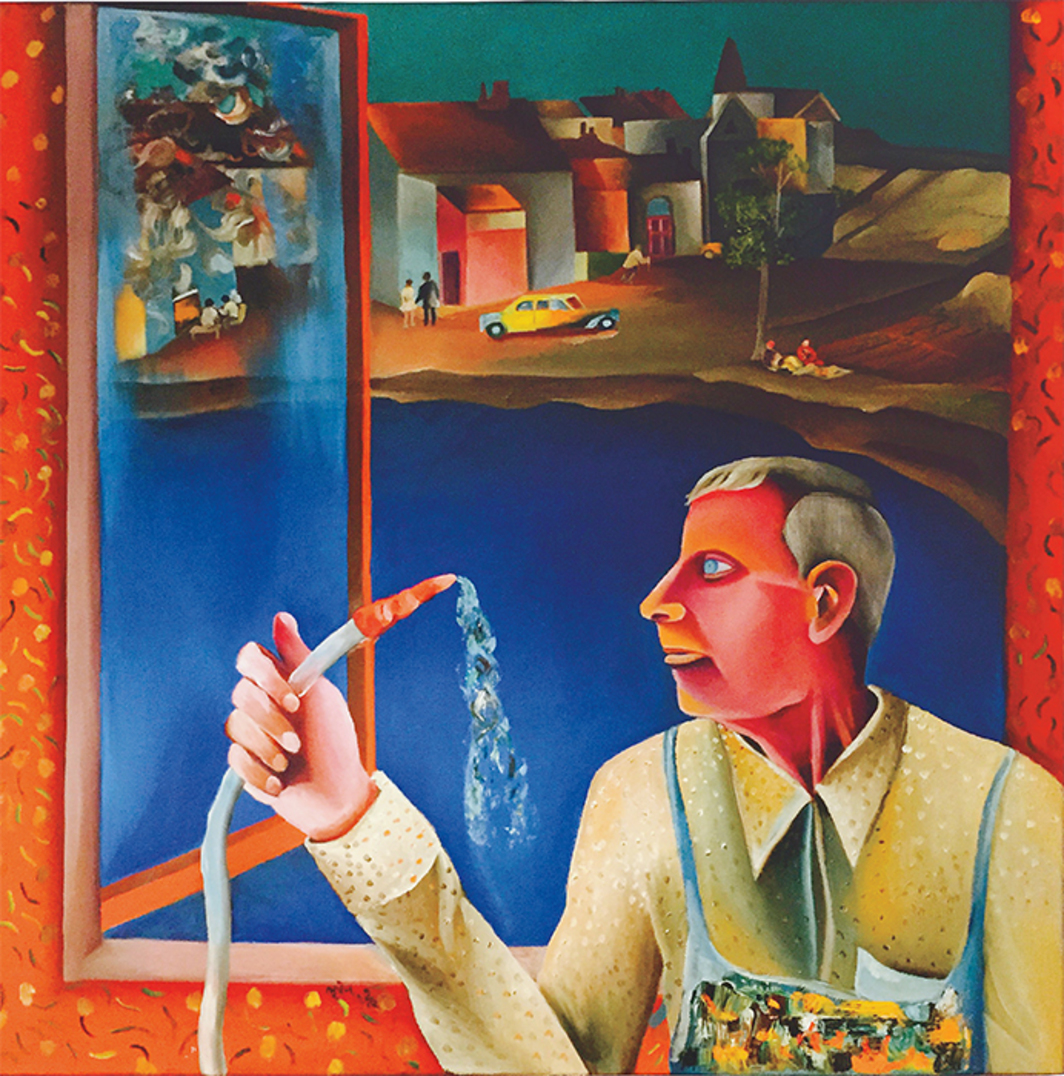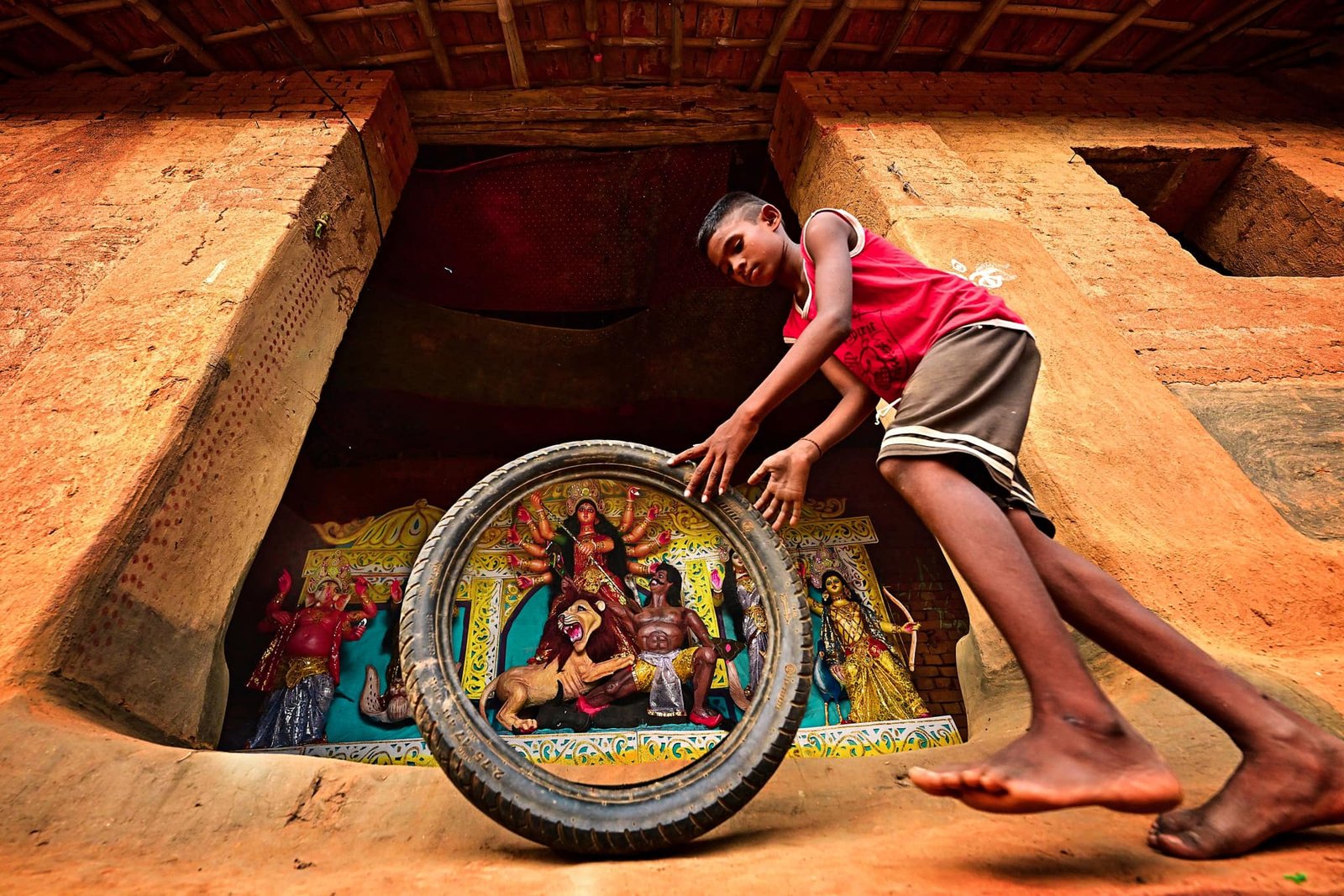“….he(Indian artist) has to go through the school of world art. But to become a genuine artist he is not allowed to forget or suppress his racial and nationalist way of seeing, feeling, and shaping – he has to be an Indian artist or nothing at all. In the end his painting will be different from all European art as the thinking of India , Upanishads and Buddha are different from European thought. ” -Ludwig Goldscheider , Artrends 1961
Raja Ravi Verma’s thematic choices which depict the quest of the nationalist identity, was moulded into a greater and conscious search by Revivalism: when Abanindranath Tagore created ‘Bharatmata’ (below).
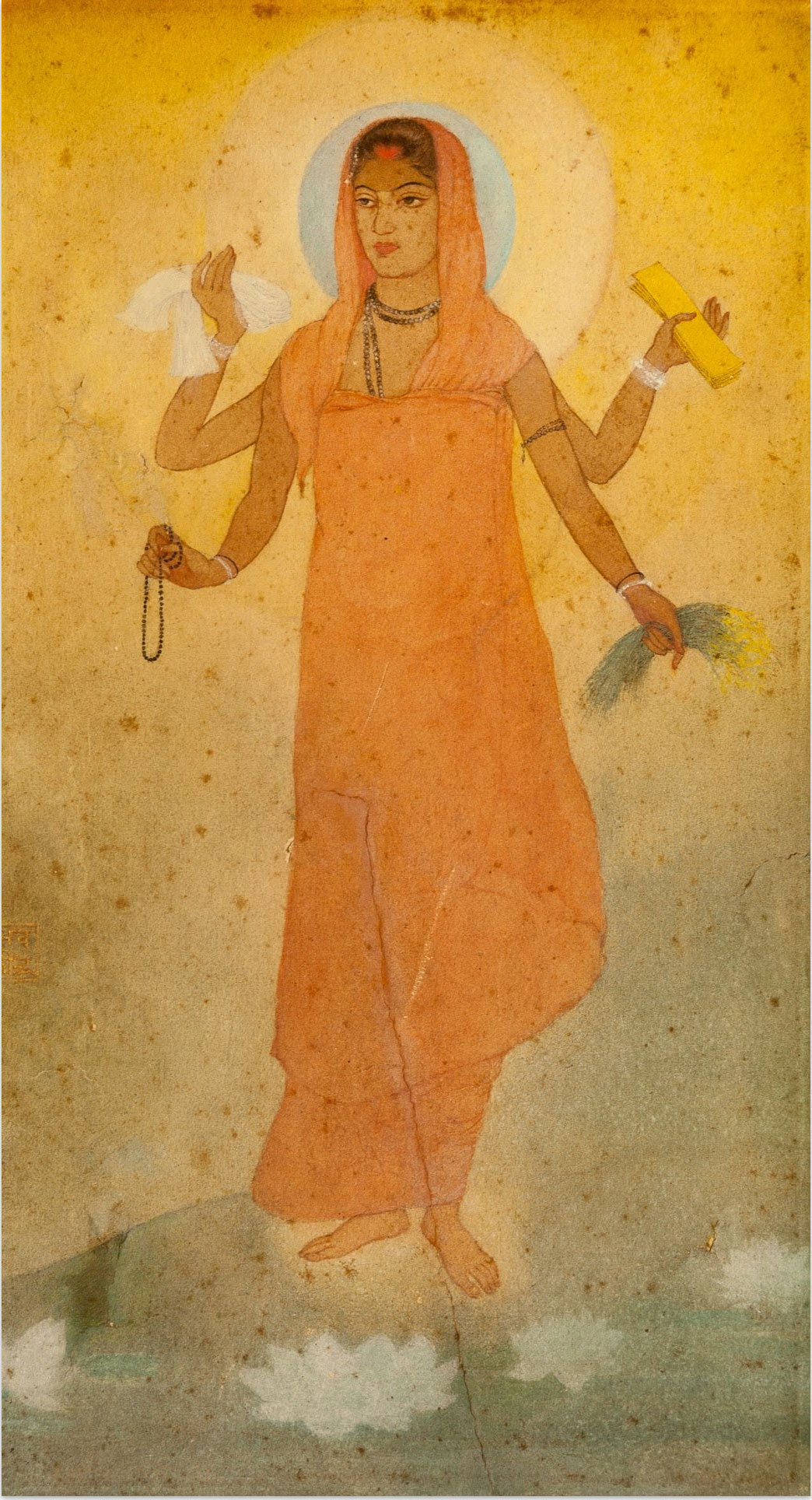
BHARATMATA BY ABANINDRANATH TAGORE
However, the exhibition of the ‘nationalist identity’ was rejected by artist’s like Gaganendranath Tagore and Rabindranath Tagore carried forward by Benode Behari Mukherjee , Ramkinkar Baij and Amrita Sher-Gil . To be more precise, they did not imitate the Western Modern Art movements, they incorporated these styles into subjective interpretations , which resulted in depiction of personal expressions.
WESTERN ORIENTED MODERNISTIC SENSIBILITY:
The 1940s witnessed a dismissal of Revivalism and European academic realism which of course, was the consequence of conscious refusal to imitate western styles initiated by some of the eminent artists of the earlier decades. However, the contemporary interpretation of history and tradition came up with an issue : Interrogation of the authenticity of representing national identity .
This issue was solved when in the 1940s and 1950s artists who were working within the Progressive art movements chose nativism mixed with Western oriented modernistic sensibility.
NATIVISM

WORDS AND SYMBOLS BY K.C.S PANIKER

WORDS AND SYMBOLS BY K.C.S PANIKER
K.C.S. Paniker’s series “Words and Symbols”(above) exhibit the use of flat pictorial space overlaid with his reinterpretations of quasi religious sources : traditional cryptic pictograms, Malayalam scripts and those found in horoscopes or engraved charts as visual elements. Keeping aside the surreal possibilities ,which he had derived from his inspiration: Paul Klee, he chose to embrace the narrative mode typical of Indian manuscripts.
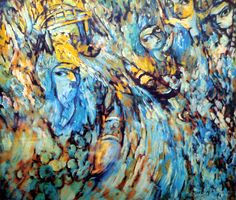
GARDEN SERIES
His “Garden series”(above) is yet another example where the brush work is an adaptation of Post Impressionism particularly of Van Gogh’s expressive brushstrokes but, nativism finds its way not only because the themes were deliberately Indian but also due to the use of enlarged heads like that of Jamini Roy’s works and compositional arrangement derived from Ajanta Murals. Perhaps, that is why, Ludwig Goldscheider commented : ” There is an evidence to show that the Indian artist is already beginning to be conscious of the ultimate requirement that his art has to be the expression of the innermost spirit of his people , to be of any real value to the outer world. It is here that tradition and usage come in again . ”
Challenging the ‘high’ in modern art

JANATA WATCH REPAIRING
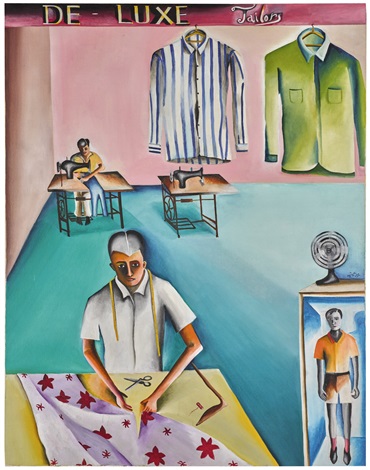
DE LUXE TAILORS
Bhupen Khakar while, depicting the garish taste of the middle class was inspired by the works of Fernand Léger and Henri Rousseau as well as Company School Paintings and Calendar Art. Taking cues from American Pop Art, he was the first Indian artist to not only challenge but also destabilize the authoritarian claims of “high” modern art. He introduced nihilism of “unholy” and bizarre concoctions which embrace the amalgamating tendency of popular culture. While paintings like “Janata watch Repairing”(above) and “De luxe Tailors”(above) speak of the life , taste and value of the middle class, “Two men in Benaras”(below) portrayed homosexual love, a concept which he came across during his stay in England and which helped him identify his own sexuality. The conscious naive nature of his paintings is evident as in “Two men in Benaras” two naked men are shown hugging each other in the backdrop of the holy city: Benaras.

TWO MEN IN BENARAS
K.C.S.Paniker as well as Bhupen Khakar are two of the many eminent artists who embraced the reality of post colonialism as subjected to Western orientations.

